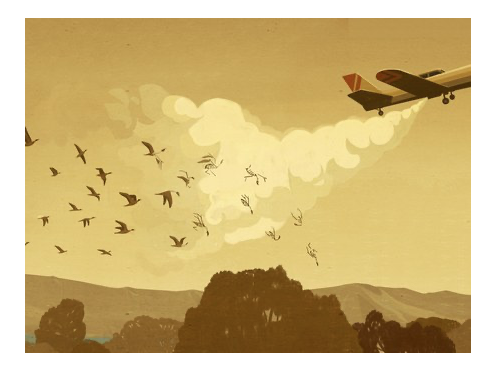
As a boy, I was fascinated by speed, the wild range of speeds in the world around me. People moved at different speeds; animals much more so. The wings of insects moved too fast to see, though one could judge their frequency by the tone they emitted--a hateful noise, a high E, with mosquitoes, or a lovely bass hum with the fat bumblebees that flew around the hollyhocks each summer. Our pet tortoise, which could take an entire day to cross the lawn, seemed to live in a different time frame altogether. But what then of the movement of plants? I would come down to the garden in the morning and find the hollyhocks a little higher, the roses more entwined around their trellis, but, however patient I was, I could never catch them moving.
Experiences like this played a part in turning me to photography, because it allowed me to alter the rate of motion, speed it up, slow it down, so I could see, adjusted to a human perceptual rate, the details of movement or change otherwise beyond the power of the eye to register. Being fond of microscopes and telescopes--my older brothers, medical students and bird-watchers, kept theirs in the house--I thought of the slowing down or the speeding up of motion as a sort of temporal equivalent: slow motion as an enlargement, a microscopy of time, and speeded-up motion as a foreshortening, a telescopy of time.
I experimented with photographing plants. Ferns, in particular, had many attractions for me--not least in their tightly wound crosiers or fiddleheads, tense with contained time, like watch springs, with the future all rolled up in them. So I would set my camera on a tripod in the garden, and take photographs of fiddleheads at intervals of an hour; I would develop the negatives, print them up, and bind a dozen or so prints together in a little flick-book. And then, as if by magic, I could see the fiddleheads unfurl like the curled-up paper trumpets one blew into at parties, taking a second or two for what, in real time, took a couple of days.
Slowing down motion was not so easy as speeding it up, and here I depended on my cousin, a photographer, who had a cinecamera capable of taking more than a hundred frames per second. With this, I was able to catch the bumblebees at work, as they hovered in the hollyhocks, and to slow down their time-blurred wing beats so that I could see each up-and-down movement distinctly.
My interest in speed and movement and time, and in possible ways to make them appear faster or slower, made me take a special pleasure in two of H. G. Wells's stories, "The Time Machine" and "The New Accelerator," with their vividly imagined, almost cinematic descriptions of altered time.
"As I put on pace, night followed day like the flapping of a black wing," Wells's Time Traveller relates: I saw the sun hopping swiftly across the sky, leaping it every minute, and every minute marking a day. . . . The slowest snail that ever crawled dashed by too fast for me. . . . Presently, as I went on, still gaining velocity, the palpitation of day and night merged into one continuous greyness . . . the jerking sun became a streak of fire . . .the moon a fainter fluctuating band. . . . I saw trees growing and changing like puffs of vapour . . . huge buildings rise up faint and fair, and pass like dreams. The whole surface of the earth seemed changed--melting and flowing under my eyes.
The opposite of this occurs in "The New Accelerator," the story of a drug which accelerates one's perceptions, thoughts, and metabolism several thousand times or so. Its inventor and the narrator, who have taken the drug together, wander out into a glaciated world, watching people like ourselves and yet not like ourselves, frozen in careless attitudes, caught in mid-gesture . . . and sliding down the air with wings flapping slowly and at the speed of an exceptionally languid snail--was a bee.








